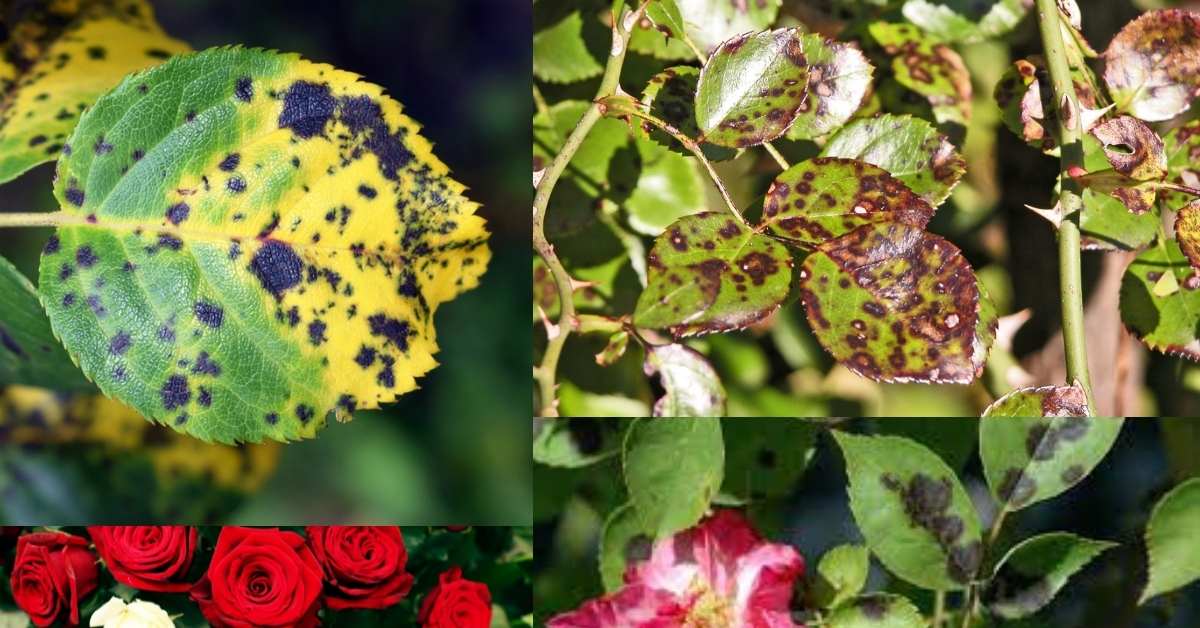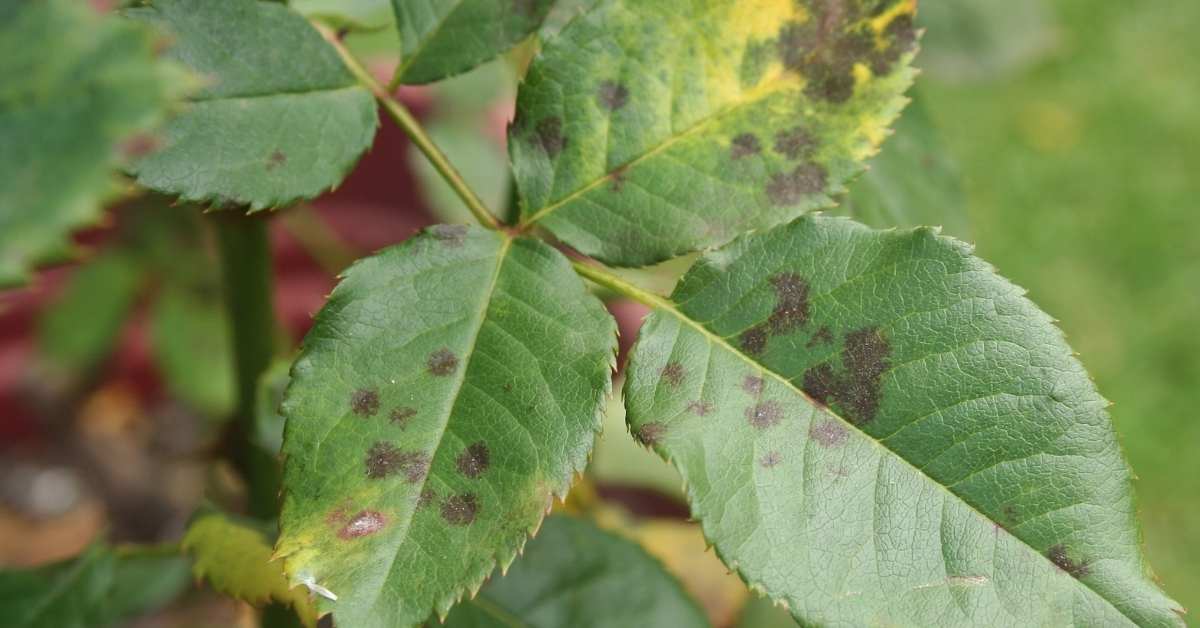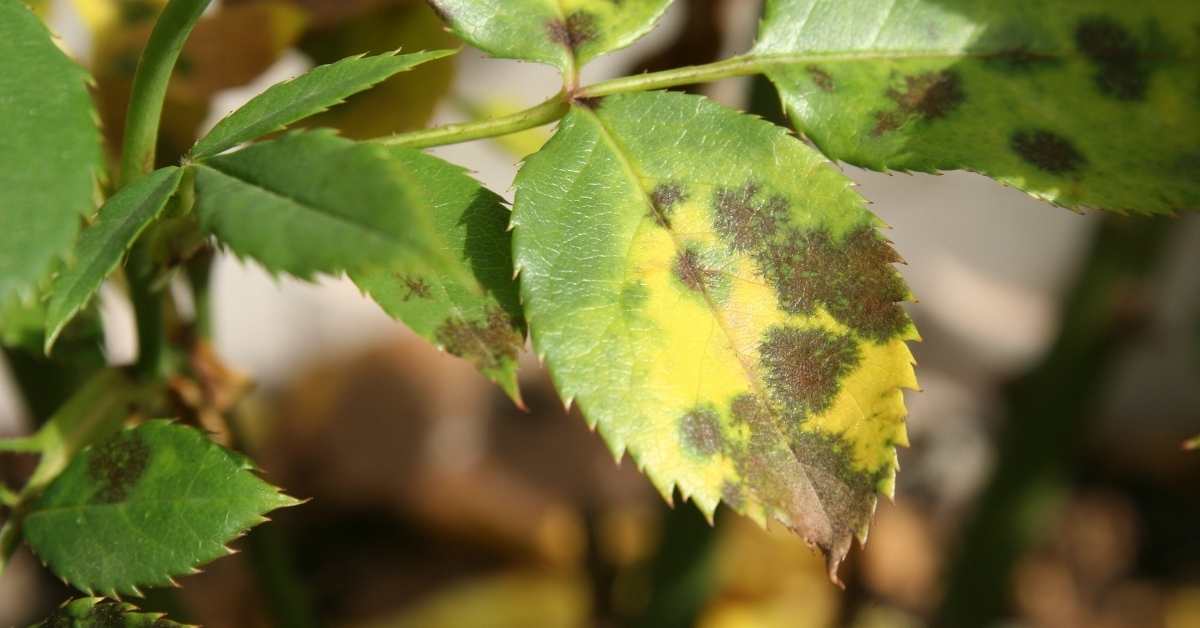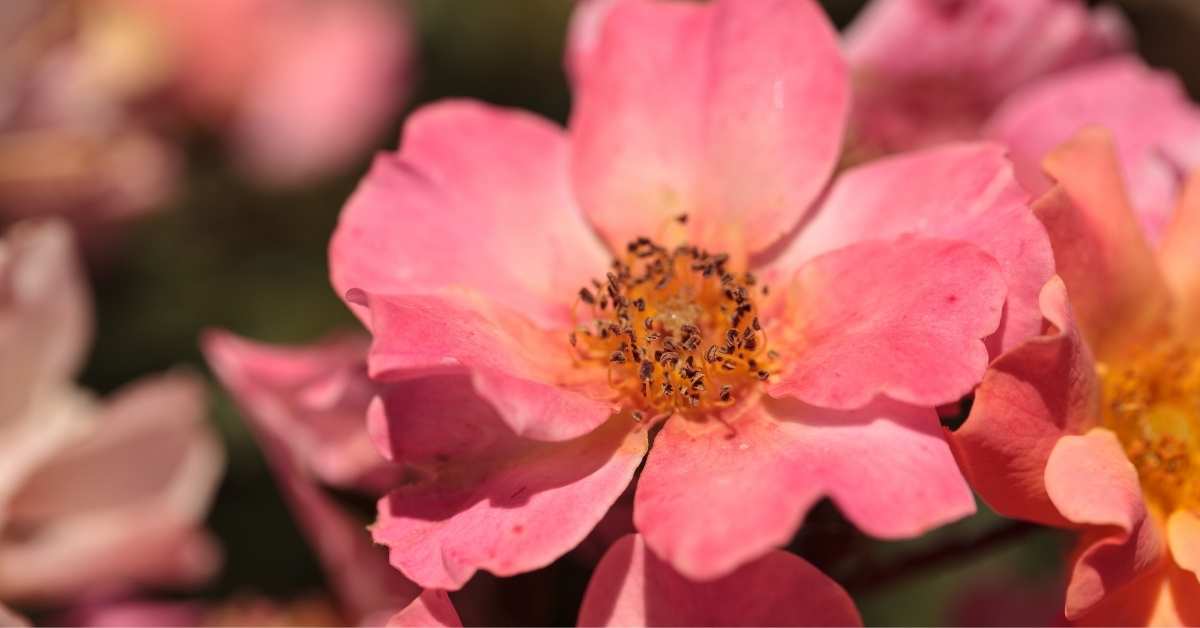Diplocarpon rosae causes the black spot fungus on roses, which is a common rose disease. If you see the unmistakable symptoms of the black spot on your rose bushes, you must take action right once. Otherwise, the rose’s capacity to withstand the winter months would be endangered as the shrub produces fewer blooms.
Symptoms of a Black Spot Fungus on Roses
A black spot is simple to detect in its later phases, although it may not be visible at first. In reality, by the time black spot symptoms appear, the fungus has already germinated for 3 to 10 days. Black stains on the leaves are the first apparent sign.
A yellow ring develops around the black spots as the illness advances, and the spots spread to the underside of the leaves. Close inspection will reveal spore-producing areas. The black dots will increase in size, and the whole leaf may become yellow before long. Many of the bush’s yellowed leaves will begin to fall off.

Because the black spot is a fungus, it may spread. As long as it isn’t treated, it will simply move from one bush to the next. Because the fungus may live through the winter on fallen leaves as well as diseased cane, farmers cannot depend on harsher weather to eradicate it.
Black spot, like other fungi, thrives in warm, wet conditions. When the ambient temperature is between 65 F (18 C) and 75 F, spores will germinate after 7 hours of being wet (24 C). The faster the illness spreads, the warmer the weather becomes.
Getting Rid of the Black Spot
The only method to avoid this illness from forming or spreading is to take proper care of your roses. Because spores may survive on fallen leaves, it’s critical to pick up and remove any dead leaves from the ground throughout the autumn season, as well as cut away any diseased canes.
When the roses are still dormant in the spring, go to the nursery and get wettable sulfur and soap containing fungicide, vigorously spraying all rose bushes with both. Because spores are unable to attach to sulfur, the leaves are safe anytime they are coated. Because sulfur is washed away by rain, it’s essential to reapply as needed.
Because the fungus requires a damp environment to germinate, take additional precautions to keep the leaves dry. Plant roses in sunny areas rather than shaded areas, for example, so that morning dew evaporates more rapidly.

When watering, use sprinkler hoses so that only the roots are moistened and not the foliage.
Water early in the day so that the water has plenty of time to evaporate.
Regularly prune the bushes to enable air to circulate freely among the leaves and leave plenty of space between them for the same reason.
When black spot symptoms appear on roses, cut away the afflicted areas and discard the cuttings, not the compost pile (remember, the fungus on leaves will not die). Sulfur should then be sprayed on all of the leaves.
Your roses will produce lovely blooms year after year if you give them some tender loving care.


